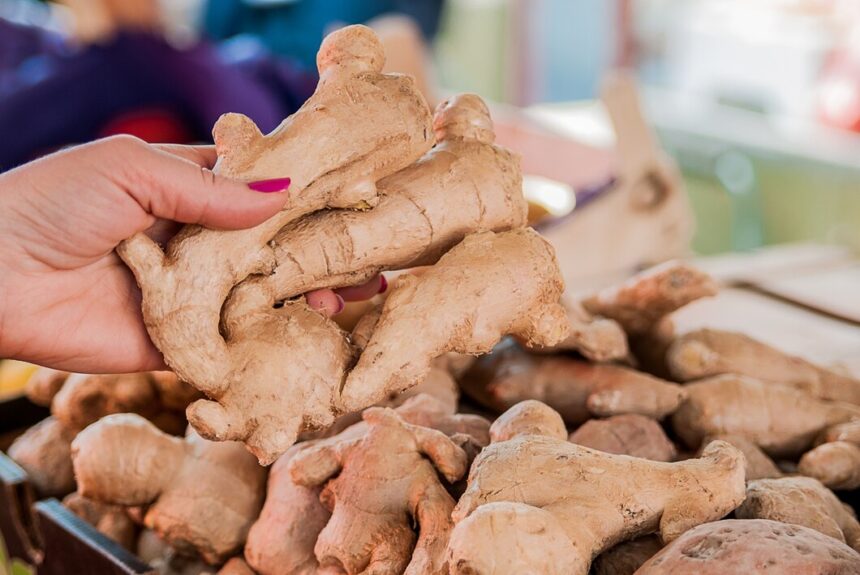Ginger, prized for its culinary and medicinal properties, is a valuable crop grown in various regions of South Africa. As demand for ginger continues to rise both domestically and internationally, farmers are seeking innovative techniques to enhance the quality and yield of their ginger crops. From soil preparation and planting methods to irrigation, fertilization, and pest management strategies, there are several approaches that farmers can employ to optimize the production and profitability of ginger farming in South Africa.
1. Soil Preparation and Site Selection
Successful ginger cultivation begins with proper soil preparation and site selection. Choose well-draining, loamy soils with a pH level between 5.5 and 6.5, which provide optimal conditions for ginger growth. Conduct soil tests to assess nutrient levels and pH balance, and amend the soil as needed with organic matter, such as compost or well-rotted manure, to improve soil structure and fertility. Select sites with adequate sunlight and protection from strong winds to promote healthy ginger growth.
2. Variety Selection
Selecting the right ginger variety is crucial for achieving high-quality yields. Choose varieties that are well-suited to the local climate and soil conditions, with desirable traits such as disease resistance, high yield potential, and superior flavor. Popular ginger varieties for cultivation in South Africa include African Ginger, Himachal Ginger, and Rio de Janeiro Ginger, among others. Consult with local agricultural extension services or experienced growers to determine the best varieties for your specific growing conditions.
3. Planting Techniques
Proper planting techniques are essential for establishing healthy ginger crops. Plant ginger rhizomes (seed pieces) in well-prepared soil at the onset of the growing season, typically in spring or early summer. Ensure that rhizomes are planted horizontally, with the bud or eye facing upward, at a depth of 5-10 centimeters and spaced 15-20 centimeters apart in rows. Mulch the soil surface with organic materials, such as straw or wood chips, to conserve moisture and suppress weed growth.
4. Irrigation Management
Ginger requires consistent moisture throughout the growing season to support healthy growth and development. Implement an efficient irrigation system, such as drip irrigation or overhead sprinklers, to deliver water directly to the root zone while minimizing water waste. Monitor soil moisture levels regularly and adjust irrigation frequency and duration based on weather conditions, soil moisture levels, and crop stage. Avoid overwatering, which can lead to root rot and other diseases, and ensure adequate drainage to prevent waterlogging.
5. Fertilization Practices
Appropriate fertilization is essential for supplying ginger plants with the nutrients they need for vigorous growth and high yields. Conduct soil tests to determine nutrient deficiencies and apply balanced fertilizers or organic amendments accordingly. Incorporate nitrogen-rich fertilizers, such as composted manure or poultry litter, before planting to promote vegetative growth. Top-dress with phosphorus and potassium fertilizers during the growing season to support root development, flowering, and fruit set.
6. Pest and Disease Management
Implement proactive pest and disease management strategies to protect ginger crops from common threats such as nematodes, fungal diseases, and insect pests. Practice crop rotation to reduce pest and disease pressure, and monitor crops regularly for signs of infestation or infection. Employ cultural control methods, such as proper sanitation, weed management, and removal of infected plants, to minimize the spread of pests and diseases. Consider using biopesticides or organic pesticides as a last resort, following integrated pest management (IPM) principles to minimize environmental impact.
Enhancing the quality and yield of ginger farming in South Africa requires a combination of sound agronomic practices, careful crop management, and proactive pest and disease control. By implementing techniques such as proper soil preparation, variety selection, planting methods, irrigation management, fertilization practices, and pest and disease management, farmers can optimize the production and profitability of ginger cultivation. With attention to detail, commitment to sustainability, and ongoing innovation, ginger farmers in South Africa can meet the growing demand for this versatile and valuable crop while ensuring the long-term viability of their agricultural operations.
Join 'Farmers Mag' WhatsApp Channel
Get the latest Farming news and tips delivered straight to your WhatsApp
CLICK HERE TO JOIN






